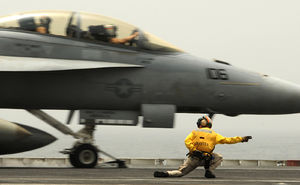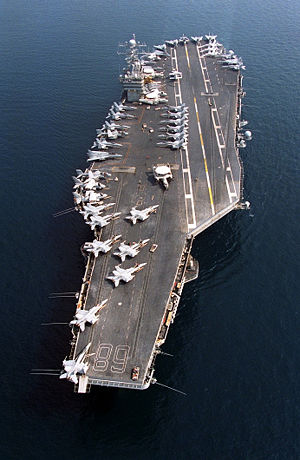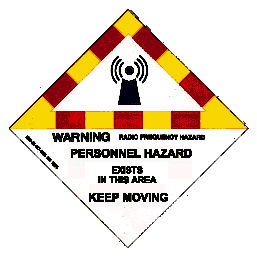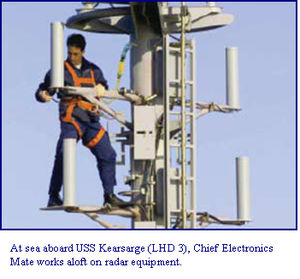Aircraft carrier: Difference between revisions
imported>Howard C. Berkowitz (world list) |
imported>Howard C. Berkowitz (expanded CTOL, STOVL, VTOL) |
||
| Line 1: | Line 1: | ||
An '''aircraft carrier''' is a warship designed to support and operate aircraft, engage in attacks on | An '''aircraft carrier''' is a warship designed to support and operate aircraft, engage in attacks on | ||
targets afloat or ashore, and engage in sustained operations in support of other forces. The largest and most capable carriers have [[catapult]]s that can, in seconds, accelerate conventional takeoff and landing (CTOL) small and medium aircraft to flying speed; they also have a system of arresting wires, which allows a high-performance aircraft to be brought to a stop in seconds. Smaller carriers may only be able to operate | targets afloat or ashore, and engage in sustained operations in support of other forces. The largest and most capable carriers have [[catapult]]s that can, in seconds, accelerate [[conventional takeoff and landing]] (CTOL) small and medium aircraft to flying speed; they also have a system of arresting wires, which allows a high-performance aircraft to be brought to a stop in seconds. Smaller carriers may only be able to operate [[short takeoff and vertical landing]] (SVTOL) aircraft, as well as [[vertical takeoff and landing]] (VTOL) [[helicopter]]s and [[tilt-rotor]] aircraft. | ||
[[Image:CV-Nimitz.jpg|thumb|Modern aircraft carrier: ''USS Nimitz'']] | [[Image:CV-Nimitz.jpg|thumb|Modern aircraft carrier: ''USS Nimitz'']] | ||
Whenever a nation, with [[power projection]] capability, faces a crisis, among the first questions asked by its leaders is "Where are the carriers?" Other than those exclusively for amphibious or antisubmarine operations, the worldwide navies with carriers in operation or under construction include: | Whenever a nation, with [[power projection]] capability, faces a crisis, among the first questions asked by its leaders is "Where are the carriers?" Other than those exclusively for amphibious or antisubmarine operations, the worldwide navies with carriers in operation or under construction include: | ||
Revision as of 20:40, 12 August 2008
An aircraft carrier is a warship designed to support and operate aircraft, engage in attacks on targets afloat or ashore, and engage in sustained operations in support of other forces. The largest and most capable carriers have catapults that can, in seconds, accelerate conventional takeoff and landing (CTOL) small and medium aircraft to flying speed; they also have a system of arresting wires, which allows a high-performance aircraft to be brought to a stop in seconds. Smaller carriers may only be able to operate short takeoff and vertical landing (SVTOL) aircraft, as well as vertical takeoff and landing (VTOL) helicopters and tilt-rotor aircraft.
Whenever a nation, with power projection capability, faces a crisis, among the first questions asked by its leaders is "Where are the carriers?" Other than those exclusively for amphibious or antisubmarine operations, the worldwide navies with carriers in operation or under construction include:
- United States
- United Kingdom
- India
- Italy
- Spain
- France
- Brazil
- Russia
- Thailand
For U.S. carrier operations, the general rule is that for a routine tempo of operations, there need to be three carriers for each one deployed in operational areas. Carriers need periodic shipyard maintenance, sometimes major overhauls of the Service Life Extension Program (SLEP) that add years of operational use, but may take several years. As new crewmembers come aboard, and new equipment and techniques are introduced, the carriers need time to work them into a team. Assembling a six-carrier presence, as in the Gulf War, is an immense logistical and operational challenge.
Carrier task force operations
Carriers never operate alone, but as the center of a group of escort and support vessels. In the Second World War, they operated at the center of concentric rings of cruisers and battleships that were there as massive anti-aircraft artillery platforms. Rings of destroyers and other light ships formed outer screens against submarines, and to give early warning of air attack.
Minimally, a modern carrier strike group is made up of a carrier, one or more cruisers, two or more destroyers, one or more attack submarines, and a supply ship. The submarine(s) scout ahead, as the most efficient anti-submarine warfare platforms. Next come the destroyers, as multipurpose screens. The cruiser both directs anti-air warfare, and is a major surface-to-air missile (SAM) launcher. Both the cruisers and destroyers can launch cruise missiles as well as launch anti-air and anti-submarine weapons; the carrier's own aircraft are a major defensive capability.
Since the end of the Cold War, carrier groups have reorganized from the "blue water" deep ocean operating environment, no longer having to face the threat of an immense Soviet air, surface, and subsurface attack, possibly using nuclear weapons. Nevertheless, operating in the "green water" of the littoral presents a different set of threats and operational requirements.
Flight operations
Aircraft take off and land from the flight deck, which is one of the most dangerous places outside an intense battlefield. On U.S. ships, every crew specialty is indicated by color-coded jackets and helmets, with constant visual monitoring and loud, immediate calls to anyone out of their assigned area.
It took decades to work out the technologies of modern carrier operations, which changed dramatically with the introduction of jet aircraft following the Second World War. Just as important as the launching and landing technology are the disciplines of operations, which took as long to work out. A nation may build or buy its first carrier, but it will take longer to train the carrier crew and aviators, and build the infrastructure to pass on the hard-won lessons.
While Japan started WWII with a group of magnificently trained aviators, they made a terrible mistake by not rotating them back ashore to train new pilots, think about improved doctrine, and prepare for the next level of responsibility. Not only did Japan gradually lose very good people in air combat, the losses of skilled personnel, at the Battle of Midway may have been even more disastrous than the four sunken carriers. The Battle of the Philippine Sea, also known as the "Marianas Turkey Shoot", destroyed what was left of a critical mass of aircrew. In contrast, the U.S. had a constant rotation cycle, where new pilots served a first combat tour, came back ashore and became a flight instructor, and then rotated back as a flight or squadron leader. After cruises in leadership, they again went back to teach and think, and to qualify as department heads, and eventually air group commanders, carrier captains, and, later, carrier task force admirals.
Launch
The very first experiments with launching seaplanes used catapults, but, with the first true carriers, the propeller-driven aircraft were small and light enough to be able to reach takeoff speed under their own power. Carriers would also turn into the wind for flight operations, and steam at maximum speed, so the aircraft had the benefit of the ship's momentum and of a wind providing lift. As in the Doolittle raid, it was easier to take off than land.
Catapult

As carrier aircraft grew heavier, their own engines simply did not have the power to develop adequate speed by running down the deck. While a few experiments with rocket boosters had specialized applications, the model had to change to using immensely powerful catapults to bring the aircraft to flying speed within seconds. Originally, catapults were hydraulically powered, but some disastrous accidents, and inherent limitations of the power of hydraulics, led to the current generation of steam-driven catapults. The steam comes from the main engines of the carrier.
Electromagnetic catapults are under active development and may significantly increase capabilities, but they also present a set of unique challenges.
Catapult-equipped carriers are the standard in the U.S. Navy and France.
Ski Jump
Several countries, including India, Russia, Spain and the U.K., do not have catapults, but do have a "ski jump" ramp that can greatly increase the takeoff load capability of a STOVL aircraft. British and possibly French carriers in design and construction may have an unusual combination of ski jump and angled deck, the latter more typical of catapult-equipped CTOL carriers.
Landing
- Arresting wires
- Barricade
- Angled deck
- Landing signal officer ("paddles")
- Optical landing systems
Aircraft
United States
A typical Carrier Air Wing is made up of:
- 4 F-18 Hornet or F-18 Super Hornet multirole squadrons
- 1 electronics warfare detachment, with EA-6B Prowlers to be replaced by EF-18 Growlers
- 1 E-2C Hawkeye airborne early warning squadron
- 1 helicopter squadron
U.S. amphibious vessels can carry the AV-8 Harrier II STVOL fighter, MV-22 Osprey tilt-rotor aircraft, as well CH-46, CH-53 and AH-1 Cobra helicopters. Since their primary emphasis is on helicopters, they do not have "ski jump" facilities to optimize STVOL takeoff.
Electronic systems
On carriers, besides the danger of being run over by aircraft, sucked into jet engines, cut in half by a snapped arresting wire, there are less visible threats. The U.S. Navy is extremely aware of the hazards of intense electromagnetic radiation from aircraft and ship avionics.
Hazards of Electromagnetic Radiation to Personnel (HERP)
Radar and communication systems, which use high-power RF transmitters and high-gain antennas represent a biological hazard to personnel working on, or in the vicinity of, these systems. The detrimental effects of overexposure to RFR are associated with an increase in overall body temperature or a temperature rise in specific organs of the body. High-level electromagnetic energy can also induce electrical currents or voltages that may cause shocks and burns. An RF burn is the result of RF current flow through that portion of the body in direct contact with a conductive object (in which an RF voltage has been induced) or at the site/+ of a spark discharge (no direct contact with a conductive object).
The use of HF transmitters (1 kilowatt and up) and the complicated structure and rigging aboard ship, especially cargo ships, has increased the probability of voltages being induced on various objects. The handling of metallic cargo lines while shipboard HF transmitters are radiating can be hazardous to ship’s personnel. On numerous occasions, RF voltages have been encountered on items such as crane hooks, running rigging, booms, missile launchers, and parked aircraft. These voltages, which may be sufficient to cause injury, are induced on the metallic items by radiation from nearby transmitting antennas.
In addition to electromagnetic radiation hazards, there are other physical hazards to Navy personnel working aloft on shipboard radar antennas. Working aloft presents a fall hazard. In addition, rotating antennas might accidentally be energized causing an injury from contact or a fall.
Hazard of Electromagnetic Radiation to Ordnance (HERO)
The high intensity RFR fields produced by modern radio and radar transmitting equipment can cause sensitive electrically initiated devices (EIDs), classically known as electro-explosive devices (EEDs), contained in ordnance systems to actuate prematurely. RFR energy may enter an ordnance item through a hole or crack in its skin or through firing leads, wires, and so on. In general, electrically initiated ordnance systems are most susceptible during assembly, disassembly, loading, unloading, and handling in RFR electromagnetic fields. The potential dangers to ordnance and fuels are obvious because there could be an explosive chain reaction.
Hazards of Electromagnetic Radiation to Fuel (HERF)
Fuel vapors can be ignited by RF induced arcs during fuel handling operations close to high powered radar and radio transmitting antennas. For example, many ships carry at least one helicopter or have the ability to refuel a helicopter and carry fuel to support helo operations.


